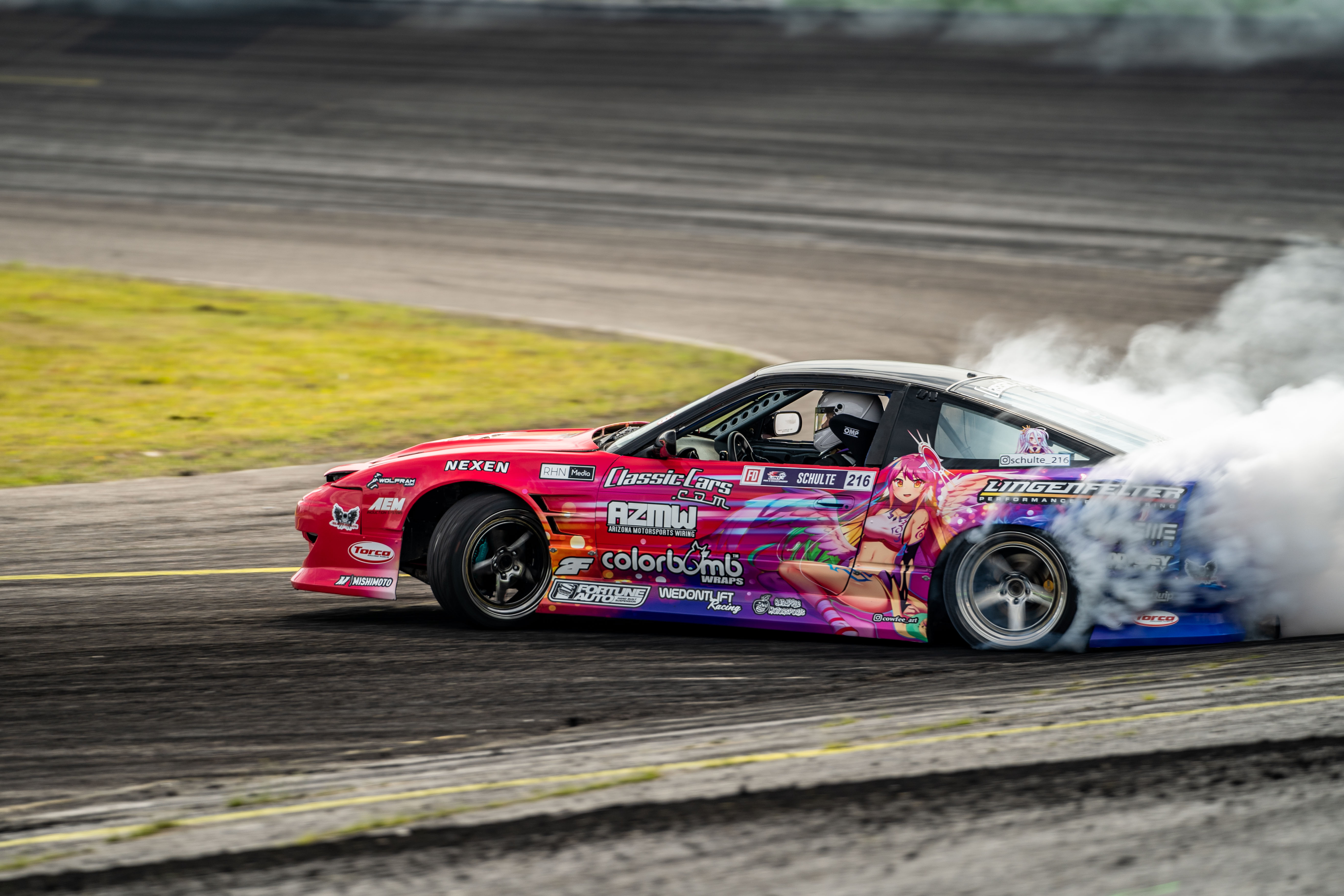Last time we checked in with Andrew Schulte, the ClassicCars.com-sponsored Formula Drift Pro2 driver, he had just unboxed his Lingenfelter LS7 to install into his freshly rebuilt Nissan 240SX, and with only three weeks before his first event of the year in Orlando, Florida.
In addition to installing the engine, a custom wiring harness had to be built, by Arizona Motorsports Wiring Specialists, and installed before the car could hit the dyno at UMS Tuning. To maximize the time available, the car was dropped off at Colorbomb Wraps to receive its custom-printed “itasha” styled livery.
“Itasha” directly translates to “painful car,” as in “painfully embarrassing” or “painful to the wallet,” and is typically a car decorated with images of fictional characters of anime, manga, or video games.
Why this style of livery on a drift car? With drifting as a sport originating in Japan, tying the culture into the motorsport just as is done there is only fitting. At the end of the day, drifting is not only about the technical aspects as described in our Formula Drift 101 series, but it’s about putting on a great show with great style.
After working on the car through the night to get the wiring harness installed, Andrew put the car on the dyno, where it pushed around 630 horsepower to the rear wheels.
The very next day, he and his team headed to a local track to quickly test the vehicle and its new LS7 engine, fuel system, dog-box transmission, and two-way coilover suspension. With three runs under his belt, he packed up the car and left early the next day on the long journey from Phoenix to Orlando.

The Orlando Speed World oval track is punishing on drift cars because of the violent drop coming off the bankings and onto the infield “power alley,” the cross section of the course linking to the opposite end of the infield track. Suspension components are pushed to their limits with the uneven surface causing the cars to bounce, forcing the drivers to really be aware of what their cars can do.
Drivers need to stay high on the banking and be able to aim the cars just right coming off it to minimize the impact while still drifting, and then to set up for the transition while trying to hit the two inner clipping points without slowing into the final bend to the finish
Schulte’s second qualifying run was a solid 84 out of 100 points, but due to a weaker first run he was gradually bumped from the top 10, to 16th place. However, the very last competitor of the 40 drivers was yet to run and dropped Schulte to 17th and out of the 16 who qualified to advance.
Still, the result was impressive considering the caliber of competition and the minimal testing time and experience on the track.
Round 3 comes up quickly — this weekend, May 9-11, at Michelin Raceway Road Atlanta, where Schulte carries the confidence of having competed there last year. He’s shooting for a podium finish.




